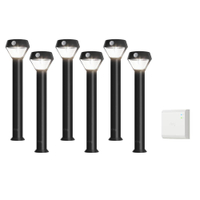7 common outdoor lighting mistakes — and how to fix them
Get switched on to outdoor lighting
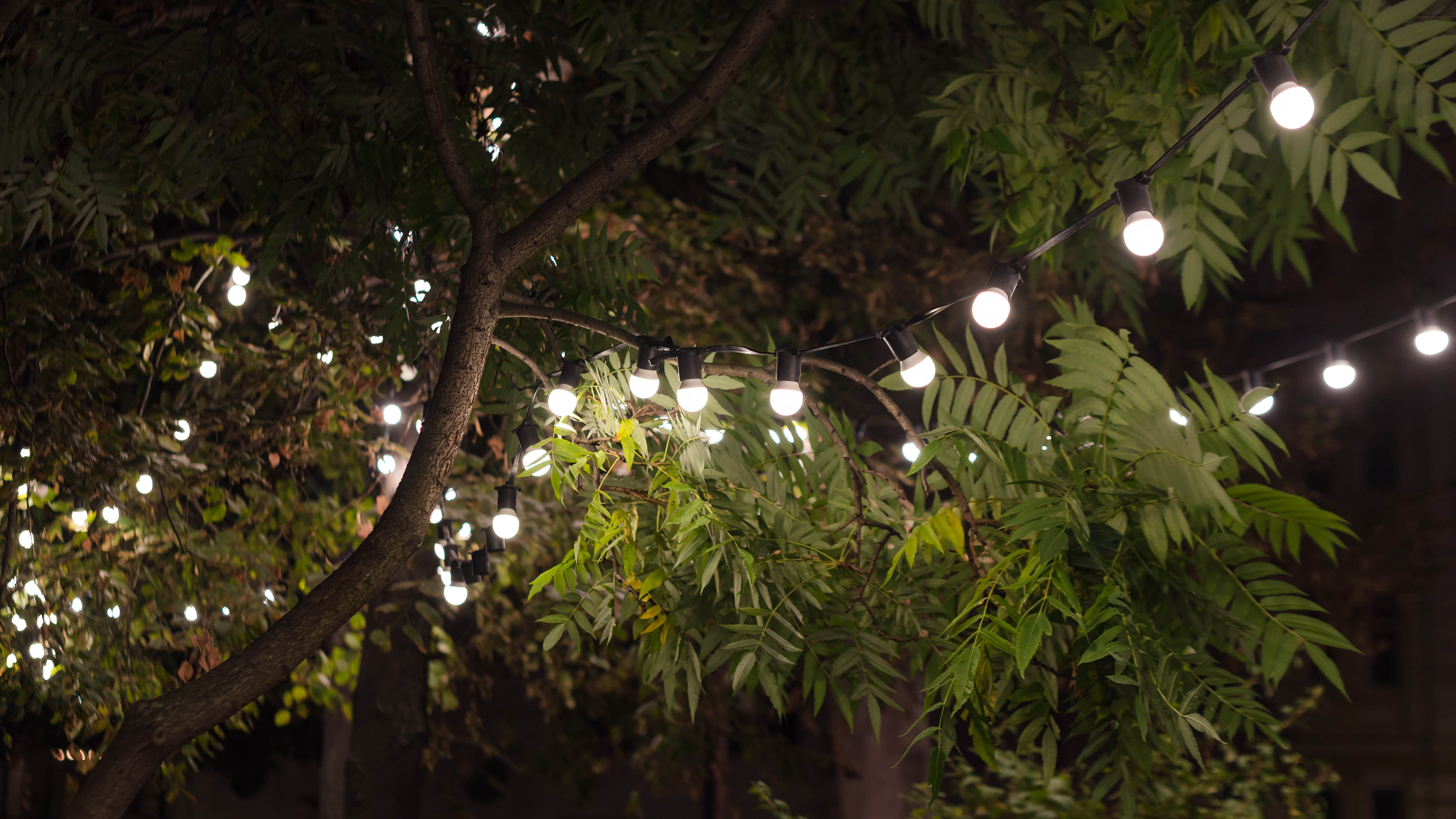
Having the right outside lighting can really boost your exterior and lift your mood when it’s cold and dark outside. And while the correct outside lighting can add a soft ambient glow to your yard, it can also serve another purpose.
Apart from creating an attractive aesthetic when entertaining, outside lighting can have practical benefits like illuminating a dark pathway or acting as a security measure to protect your property. However, you could be getting it wrong and making any of these 7 common outdoor lighting mistakes, which will dull down your intentions of how you envisage your lighting to work.
So before you get your outside lighting set up, or if you’ve already got it in place, check out these 7 outdoor lighting mistakes to avoid.
1. Skipping it completely
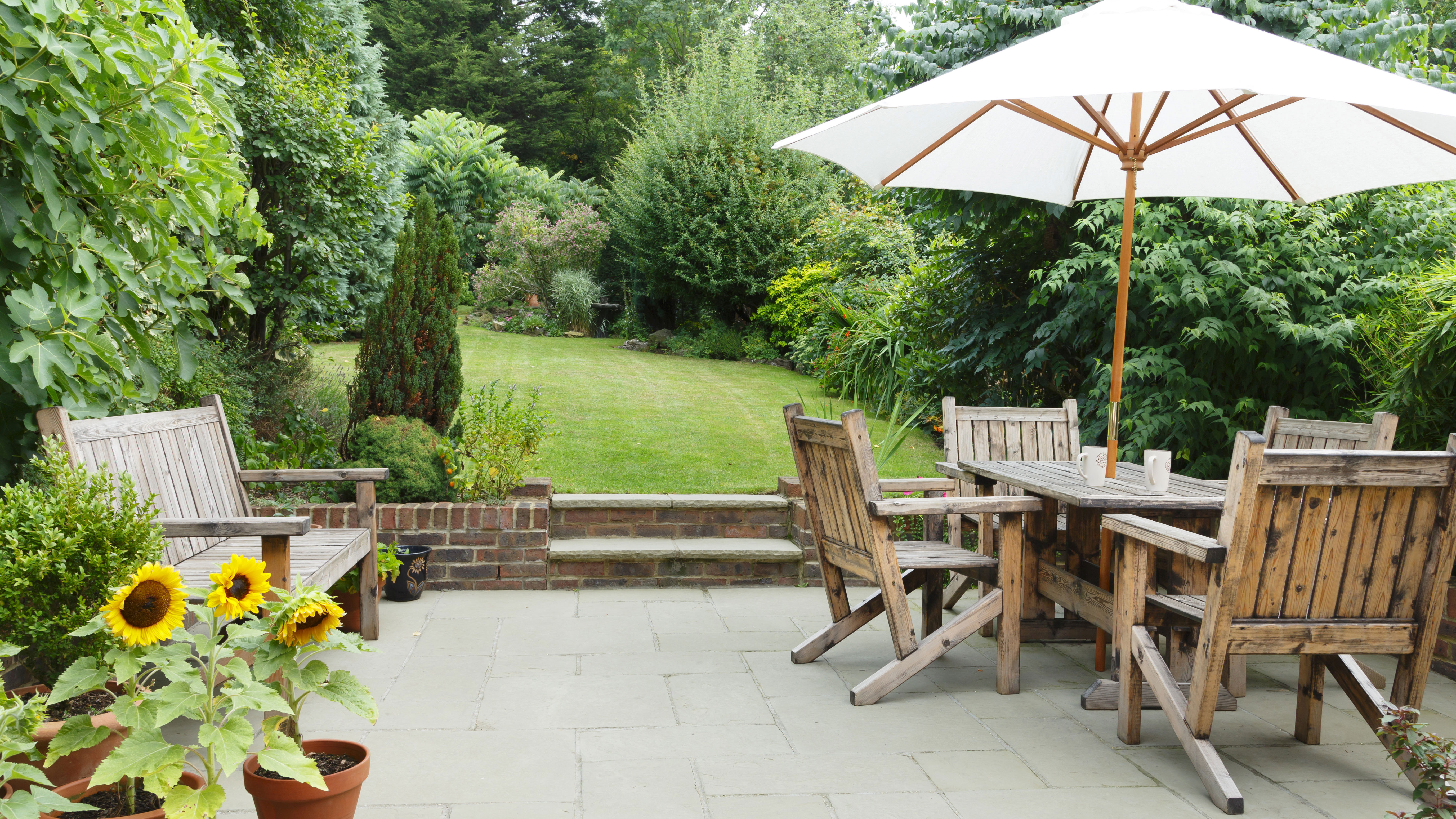
The biggest mistake of all is not having any outdoor lighting in the first place, whether for an ambient effect or for security!
Jon Saeed, managing director of Lighting Legends, says, “Not only does outdoor lighting look great, but it acts as a security measure that can deter potential robbers looking for a dark and quiet house”, adding, that a dark house is a prime target to thieves which sends the message that no one is home.
2. Not having waterproof lighting

With extremes of weather, outside lighting gets everything thrown at it, and it needs to be tough to endure heavy downpours and regular drenchings. That’s why it’s important to ensure you have the right lights to withstand the weather. if not, your light might need replacing sooner than you'd hoped.
Saeed advises, “Outdoor lights should have an IP65 rating, which means they are waterproof and suitable for outdoor use all year round.”
Sign up to get the BEST of Tom's Guide direct to your inbox.
Get instant access to breaking news, the hottest reviews, great deals and helpful tips.
So, don’t just consider milder weather in the summer, think about what your outside lights will have to battle against throughout the year. “Ensuring your lighting is waterproof will mean your lights will last longer, and you’ll get the most out of them,” says Saeed.
3. Using the wrong color temperature
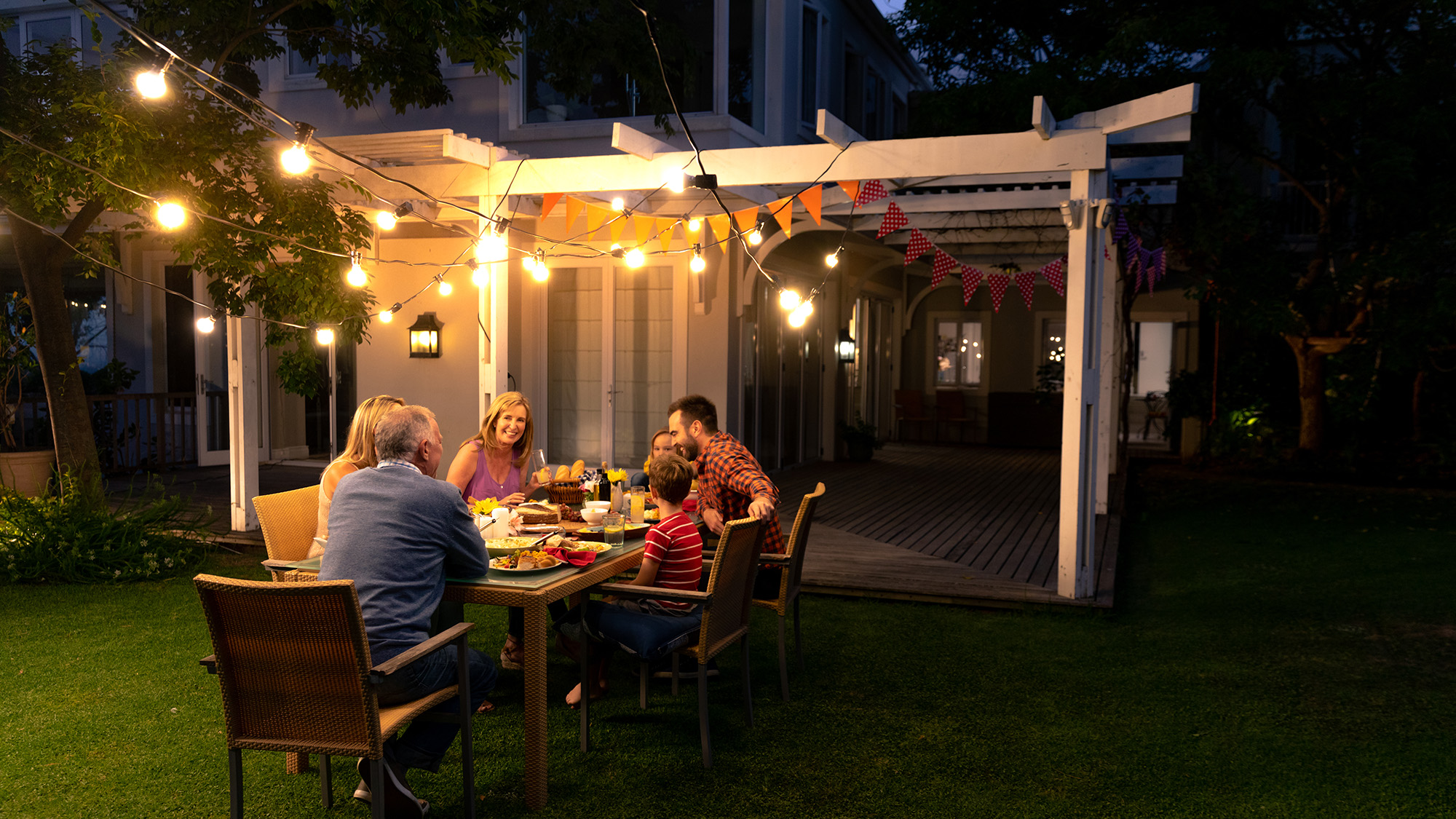
Lights are lights, right? When it comes to lighting and color temperature, not all lighting is the same. The color temperature can make a real difference to the atmosphere created. Think about how you use lighting within your home, whether you want to brighten any room in your home that doesn’t receive much natural light, create task lighting in your kitchen or create soft ambient lighting for a relaxing vibe in a bedroom.
“Different color temperatures suit specific areas of the garden, and misusing them could cause a clash and ruin the overall ambiance of the space,” says Saeed. “If you’re looking to use lights to highlight your plants, pathways, and entertaining and seating areas, then opt for a warm white.”
However, cool white lighting has a different purpose. Saeed advises, “It should be used for security lighting and when lighting up modern gardens and water features.”
It can also illuminate a porchway and pathways to eliminate and trip hazards, especially if steps are in place.
4. Not opting for solar or LED lighting
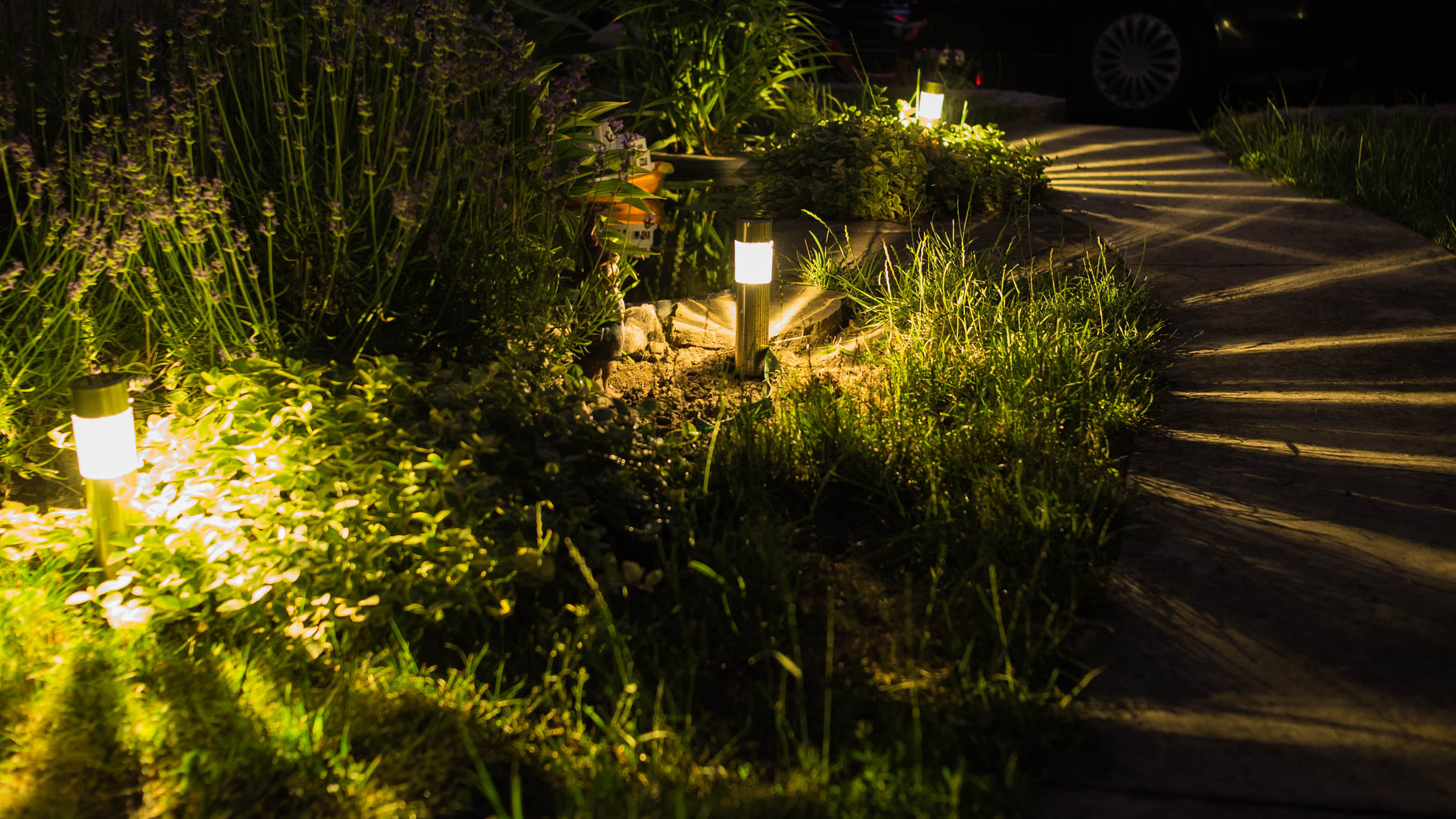
More lights means more expense, and as Saeed says, “A beautifully lit garden can come with a higher energy bill, which is why using solar and LED lighting can be a great choice.”
The best solar lights can last a long time, allowing you to light up your yard without the added cost.
However, it’s worth knowing how to clean solar lights and charge solar lights without the sun to get the most out of the sun’s energy, whether it’s in or out.
Besides saving on your energy bill, solar lights are a good eco-friendly option. But, if outside solar lighting isn’t for you, LED light bulbs are a good alternative. LED bulbs last longer than traditional ones and won’t need replacing as frequently. They will also withstand harsh weather conditions, including rain and temperature changes.
The Ring Solar Pathlight can be used to illuminate the walkway from your drive to your front door. It includes a Ring Bridge to enable smart features for your Ring Smart Lights so you can get mobile notifications, set schedules, turn the lights on and off remotely, customize settings and connect to other Ring device from the Ring app.
5. Choosing the wrong location
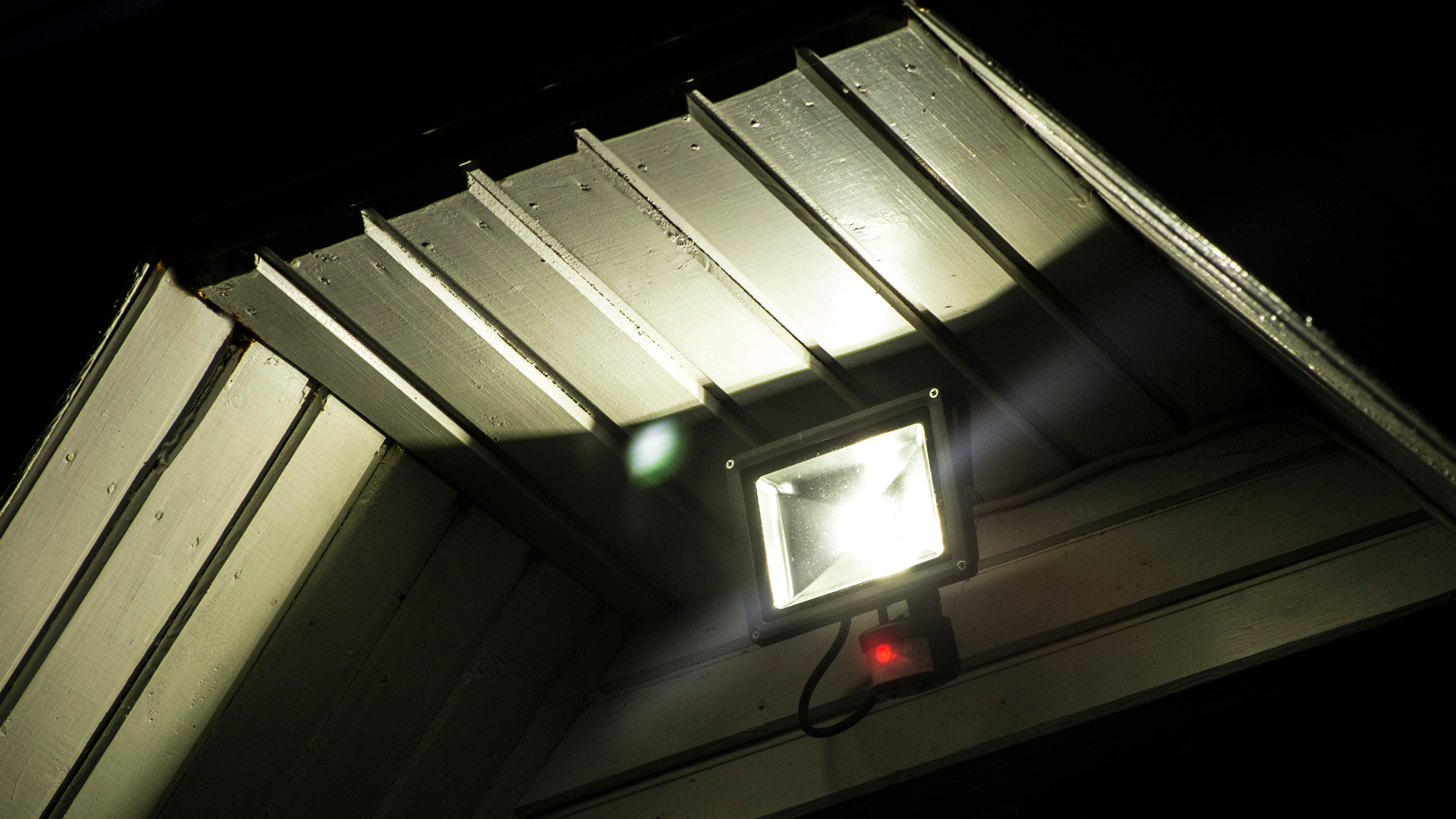
Positioning your lights in the wrong place will mean you're not gaining the maximum advantage or the desired effect from your outside lighting, whether you are trying to achieve practical security lighting or an ambient vibe.
This is particularly important if you are placing solar lights, as the sensor will need to be exposed to as much sun as possible. Positioning the sensor under a tree will limit the energy absorbed, and will also cause a problem with leaves falling and bird poop covering the sensor.
Before installing security lighting, think carefully about where you need extra light outside your home. You can use them to secure sheds and outbuildings against break-ins, and place them near doors, gates, and any dark spots that will benefit from light.
6. Not using timers or smart lighting
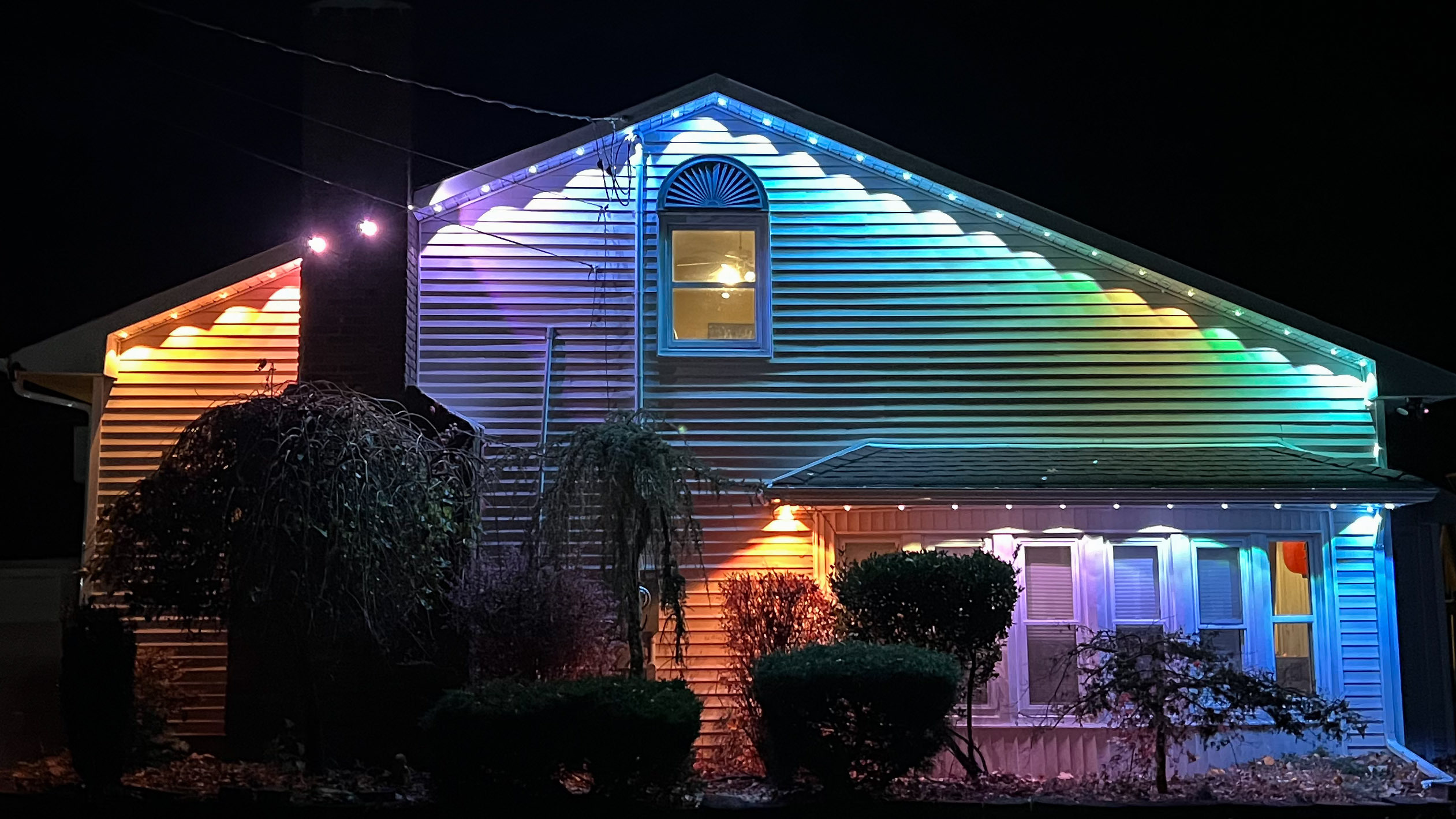
Rather than simply having the option to turn your lights on and off by hand, timers and the best smart lights will give you much more flexibility, and possibly save you money. And, while we’re all investing more in smart lighting inside our homes, there’s no reason that we can’t extend it to outside.
“Timers and smart lighting allow you to control when you want your lights on and off, even when you’re not home. Those who don’t use either of these features waste more electricity on their garden lighting,” says Saaed.
Outdoor light timers offer an ideal way to keep the lights on when you want them. Set them to come on shortly before you’re due home or when the light starts to pull in. You can also set them when you are away on holiday to fool any would-be thieves that someone is in.
In addition, smart lights give you the added option of controlling the color temperature too.
7. Unbalanced lighting

Positioning your lights without much thought might lead to an unbalance of lighting outside. You could end up with a patio or decking area lit up while the rest of your yard is bare.
Saeed suggests, “If you’re lighting up one area, like a seating area perhaps, then try to incorporate other lighting elements throughout the rest of the garden.”
I’ve placed three sets of solar lights around my backyard, using spotlights to highlight a flower bed, and two sets of string lights to add ambiance around separate seating areas, including Brightech’s Ambient Pro LED String Lights. I’ve also placed a Ring spotlight at my back gate, which notifies me of any movement.
More from Tom's Guide

Camilla Sharman has worked in publishing and marketing for over 30 years and has covered a wide range of sectors within the business and consumer industries both as a feature, content, and freelance writer.
As a business journalist, Camilla has researched articles for many different sectors from the jewellery industry to finance and tech, charities, and the arts. Whatever she’s covered, she enjoys delving deep and learning the ins and out of different topics, then conveying her research within engaging content that informs the reader. In her spare time, when she’s not in her kitchen experimenting with a new recipe, you’ll find her keeping fit at the gym. In the pool, stretching at a yoga class, or on a spin bike, exercise is her escape time. She also loves the great outdoors and if she’s not pottering about in her garden, she’ll be jumping on her bike for a gentle cycle ride.
